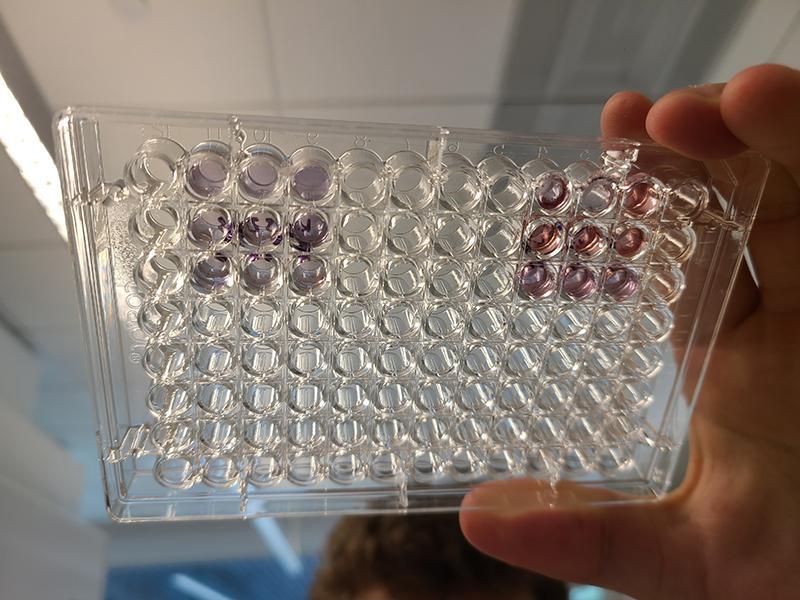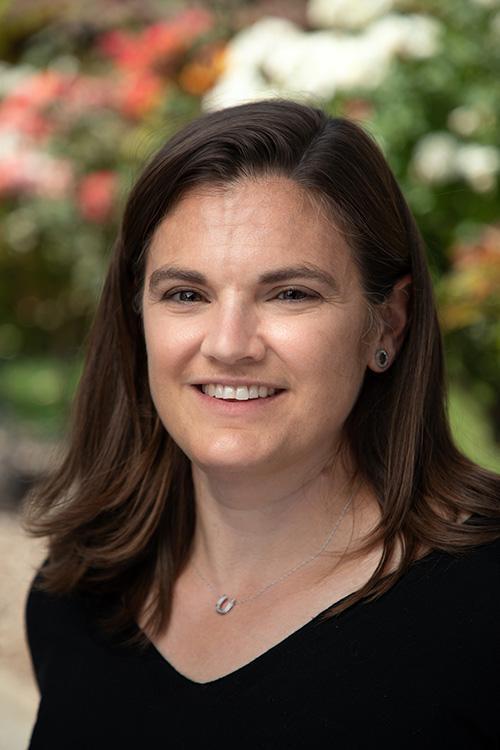Finding the Potential of Gold Nanoparticles and Peptoids
Amelia Fuller receives an award from the National Science Foundation to support her research on stabilizing gold nanoparticles.

Sarah Stoddard ’23

The Department of Chemistry and Biochemistry’s Amelia Fuller has been awarded $330,000 by the National Science Foundation to support her research project on “developing predictive guidelines to stabilize gold nanoparticles with peptoids.” Utilizing this grant, Fuller will conduct research on gold nanoparticles with the help of Santa Clara University undergraduate research assistants over the next three years.
Fuller and students involved in her laboratory at Santa Clara have already gained expertise in understanding the properties, structure, and use of peptoids from previous research. For this new project, Fuller and her undergraduate assistants will expand upon this knowledge and investigate the use of peptoids for their capacity to coat gold nanoparticles. Gold nanoparticles have the potential to be useful in a variety of applications from environmental sensing to medical diagnostics. Using different peptoids they create in the lab, Fuller and her assistants will experiment with stabilizing gold nanoparticles with these molecules and preventing nanoparticle aggregation, enabling their use in a wide range of settings.
One advantage of the peptoids created in the Fuller lab is that they are easily customizable. “We can make lots of different versions of them that are decorated with specific molecular features,” Fuller explains. Over the course of this project, Fuller hopes to discover a specific application to turn their focus towards and tailor the project accordingly. “There are a lot of cool potential applications with the gold nanoparticles. They’re used, for example, to deliver drugs to specific cells,” she says. “We’ll put on those decorations that we need for a specific function, whether it’s a drug delivery or sensing of some environmental contaminant in a water source.”
Undergraduate students who participate in this project will cultivate their technical and interpersonal skills, gaining experience and proficiencies they will find valuable in their future careers. “Communication and problem-solving are the two super transferable skills that we think about a lot in research and try to give to the students,” Fuller explains. “I always say that research is such a valuable training platform, even if students don’t want to become professional scientists. Everyone needs to be a good problem-solver and a good communicator.” The research process teaches students to find creative ways to navigate challenges, adapt to uncertain circumstances, and seek out resources and help from others when it is needed. Students also learn how to effectively communicate their ideas and their work to different audiences, both verbally and in writing.
Although it would be difficult to say where exactly this project will head over the next three years, Fuller has several initial goals she hopes to see fulfilled. The first stage of this project will involve a lot of exploration and experimentation. Fuller and her students will take a broad approach, looking at lots of different molecules to identify common pieces between them and determine what aspects are most important. The next phase will include changing the features of nanoparticles and adjusting the molecules to compensate for these changes. Finding the optimal features will be essential to this project’s future applications. “This is kind of a new frontier for us,” Fuller says. “And it’s fun to be at the start of a project where we can go in a lot of different directions.”